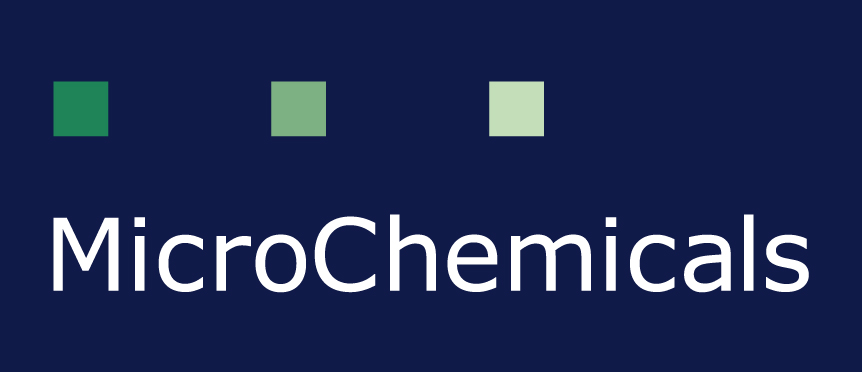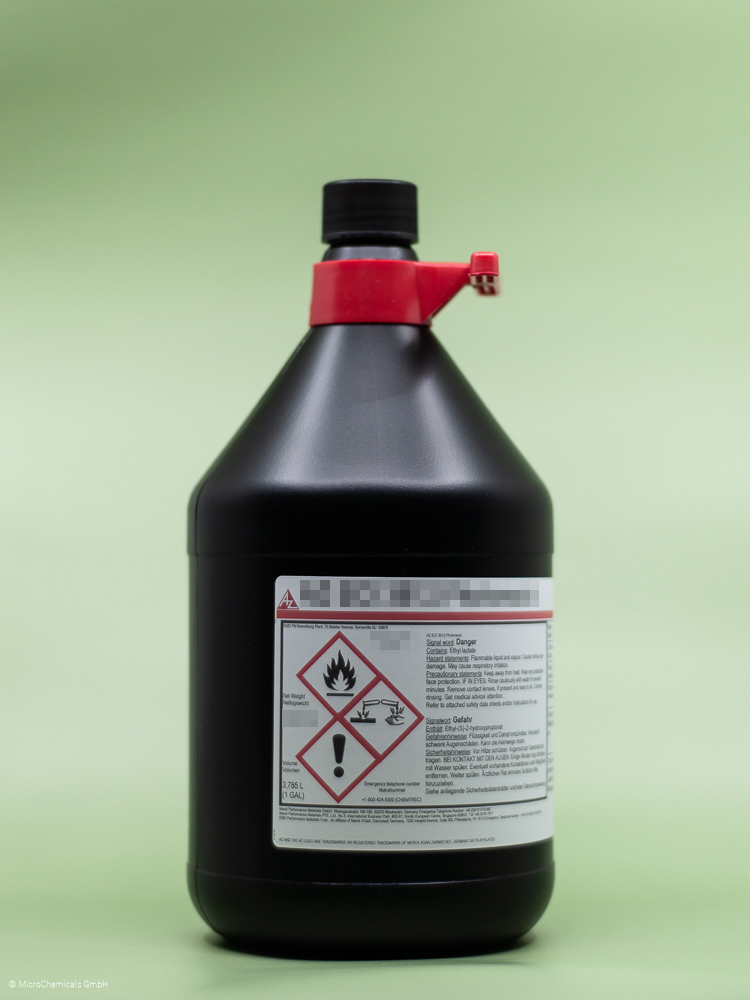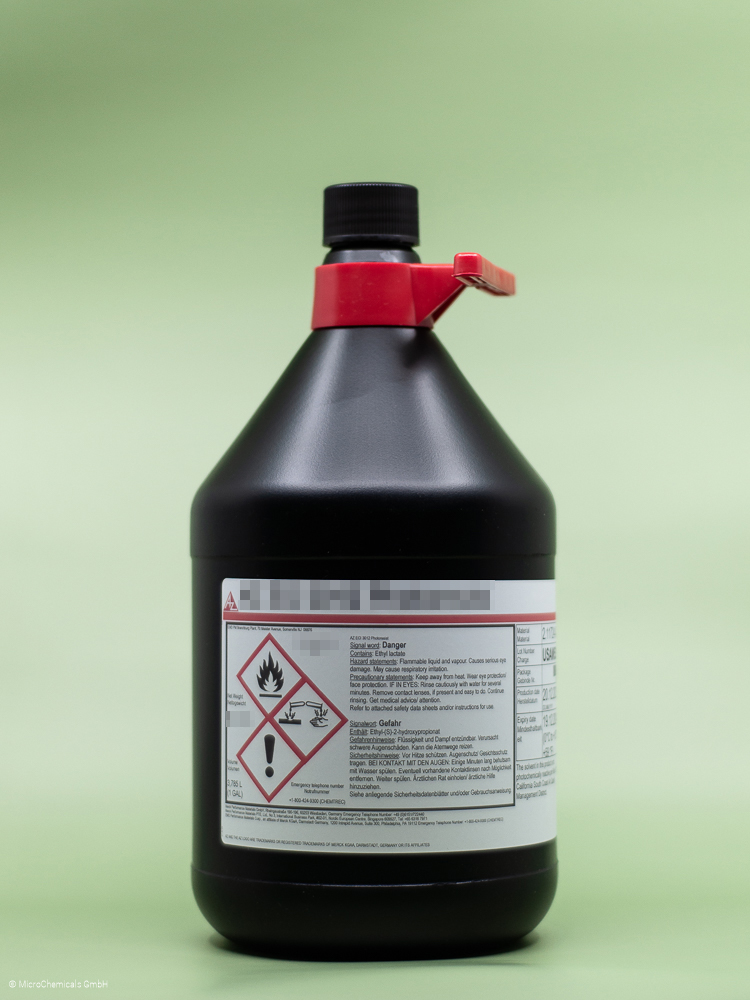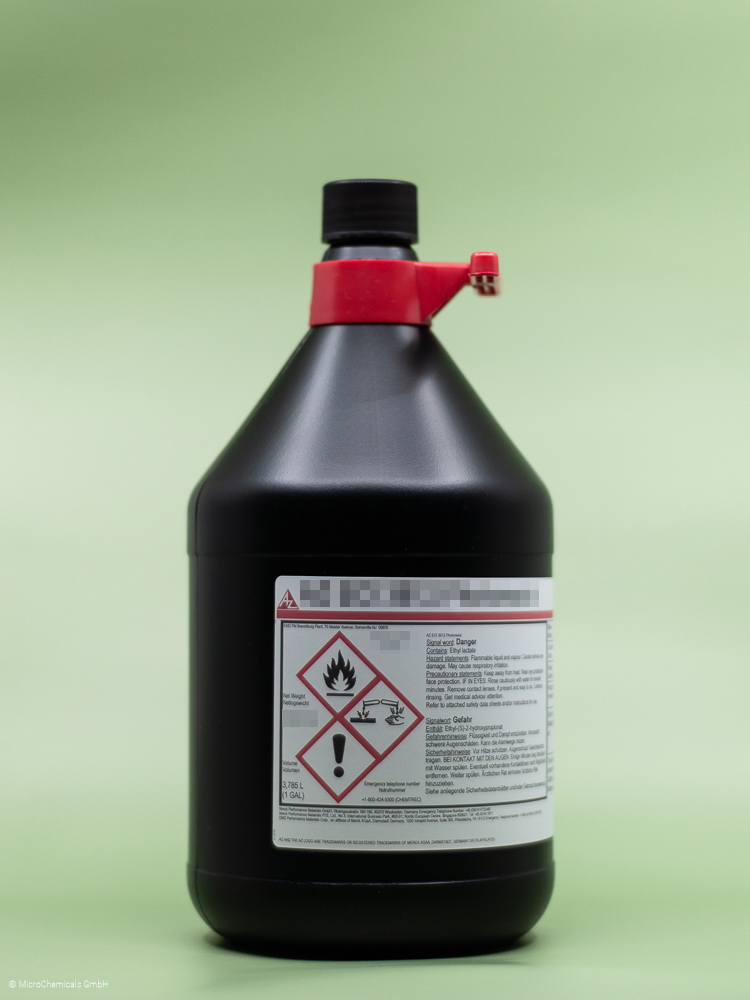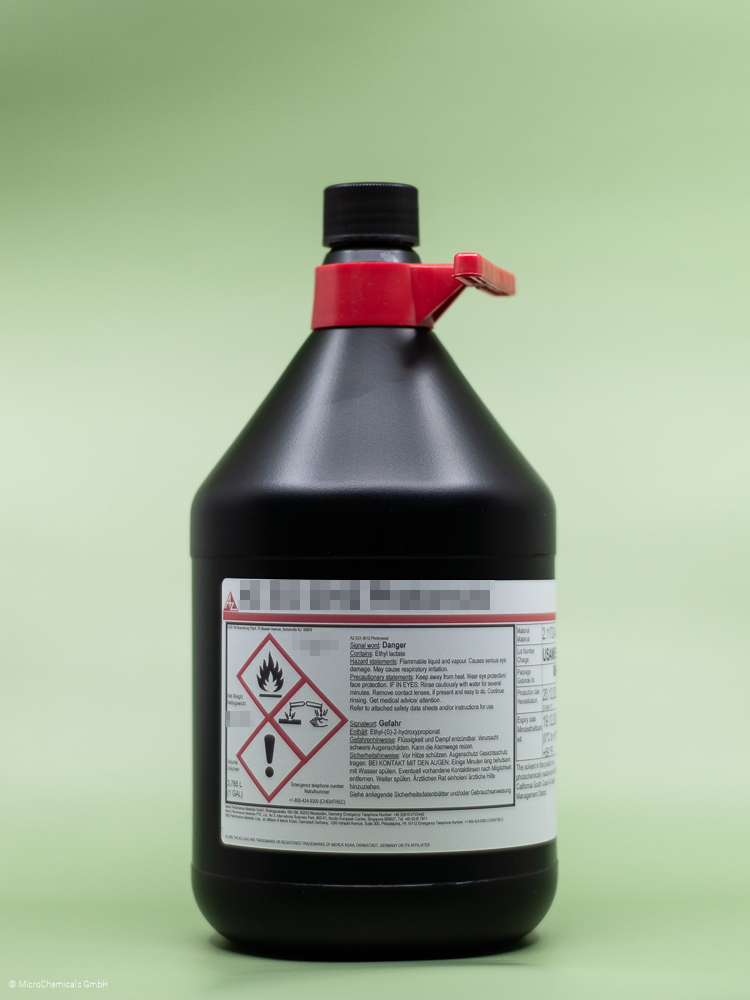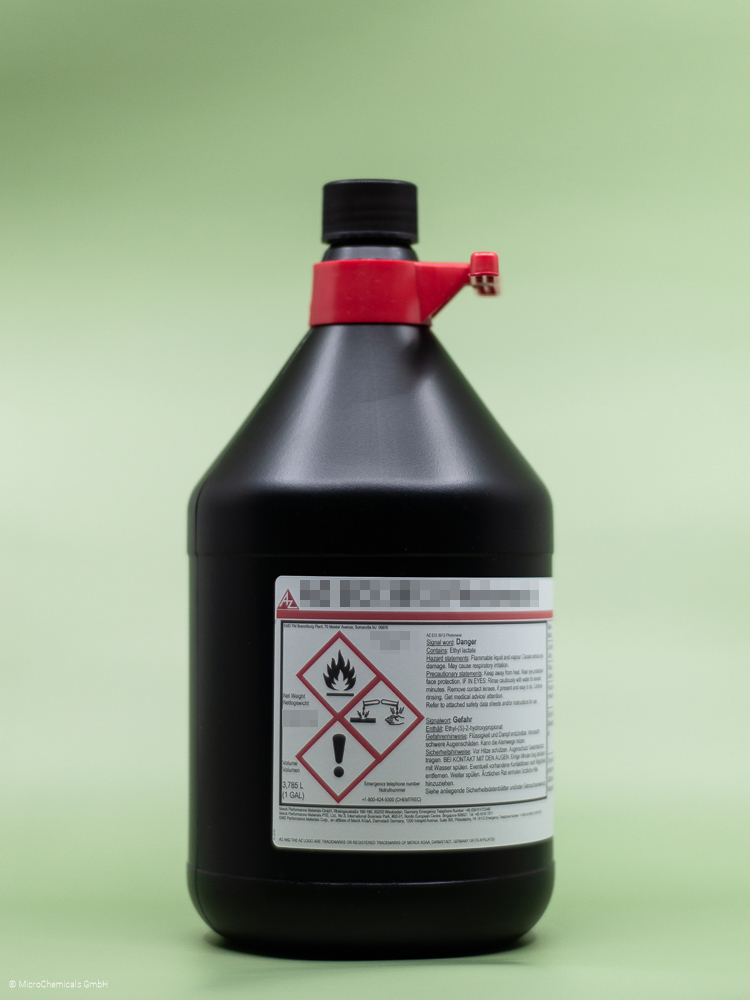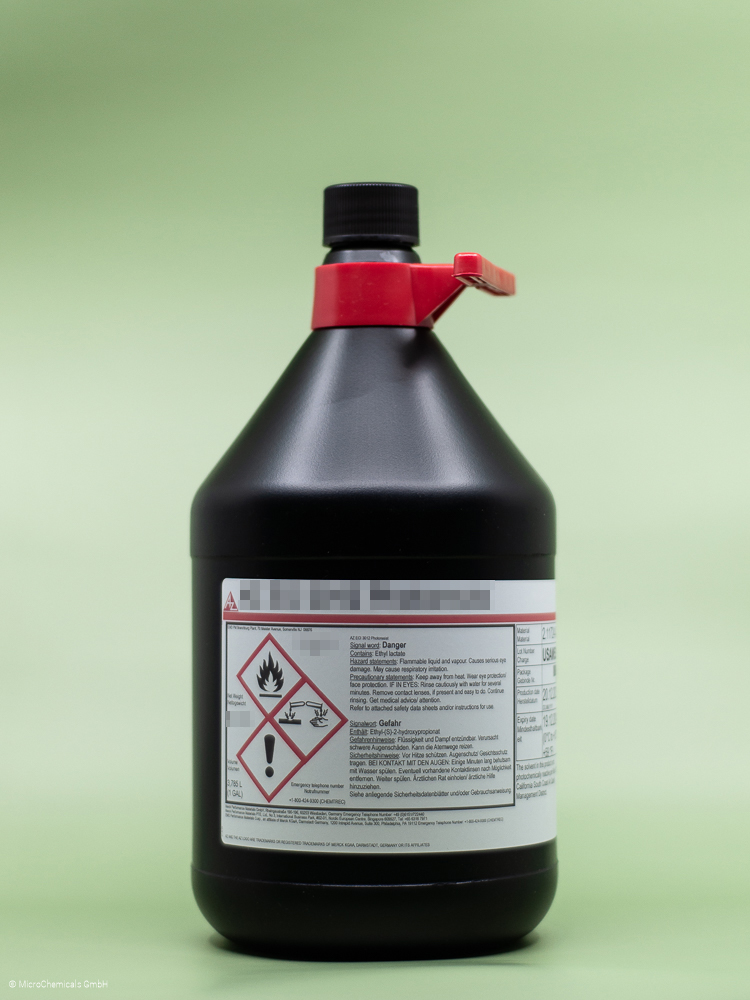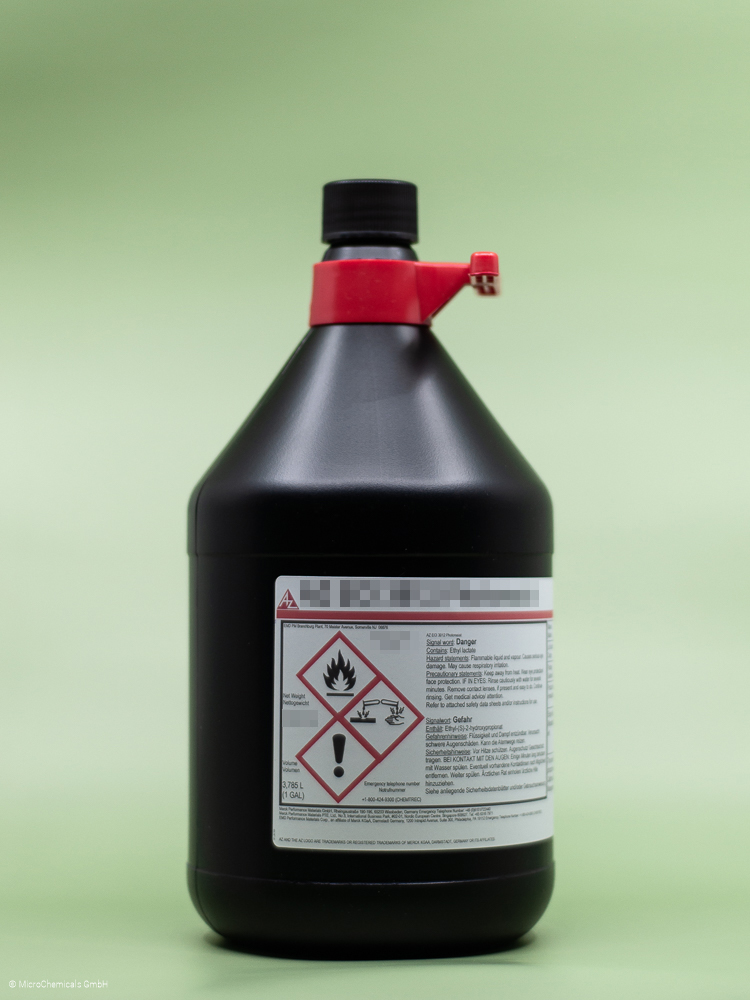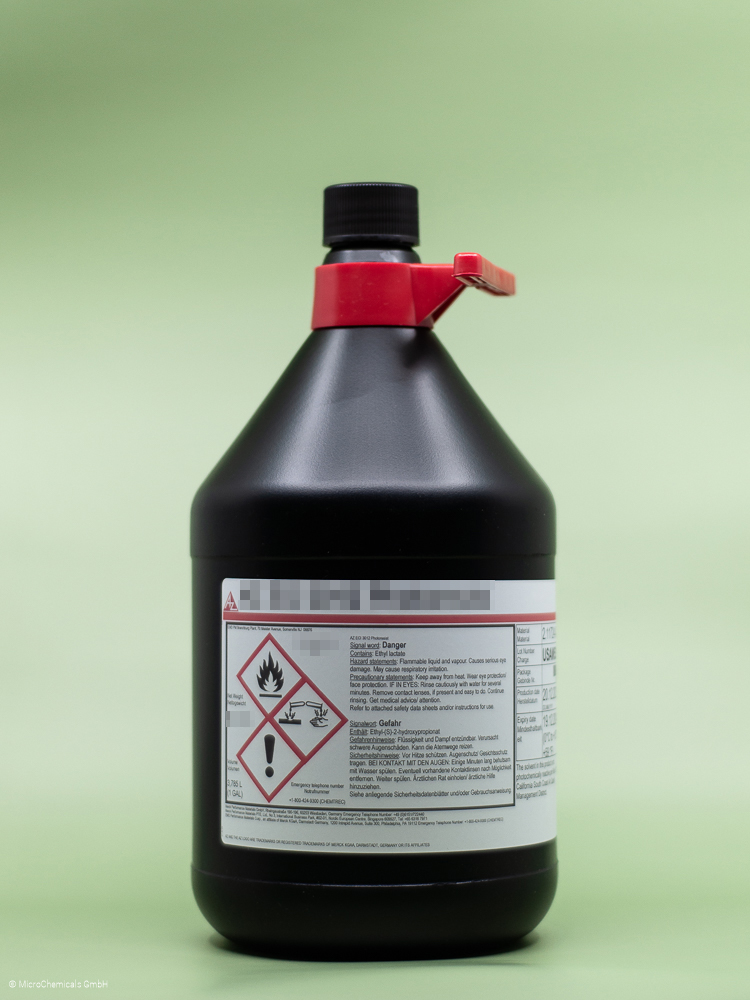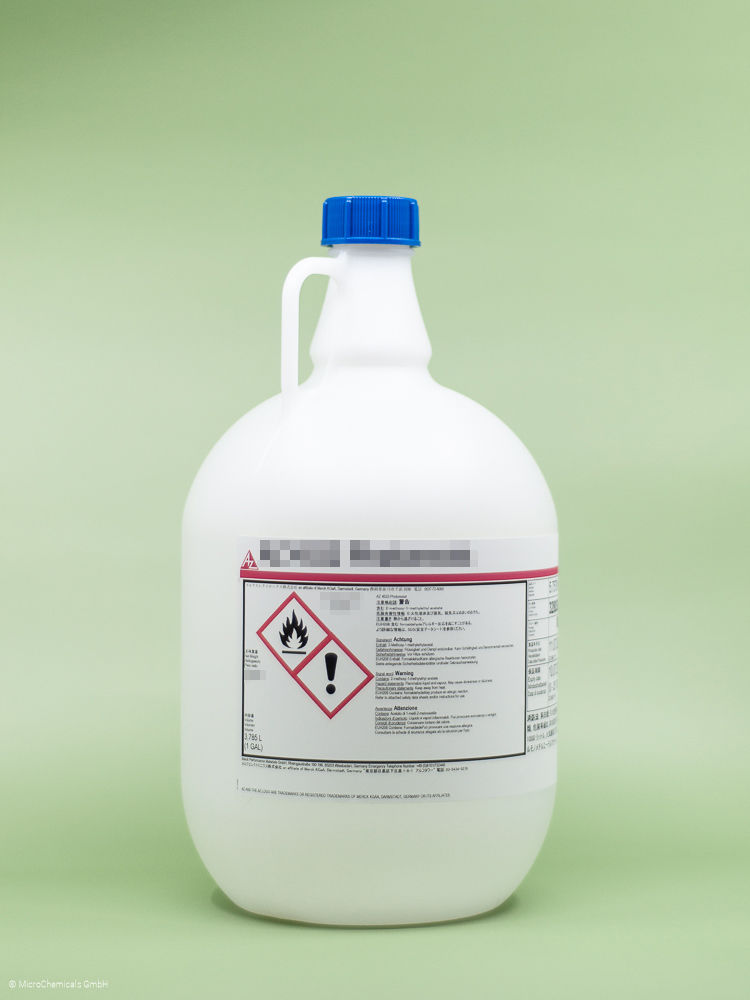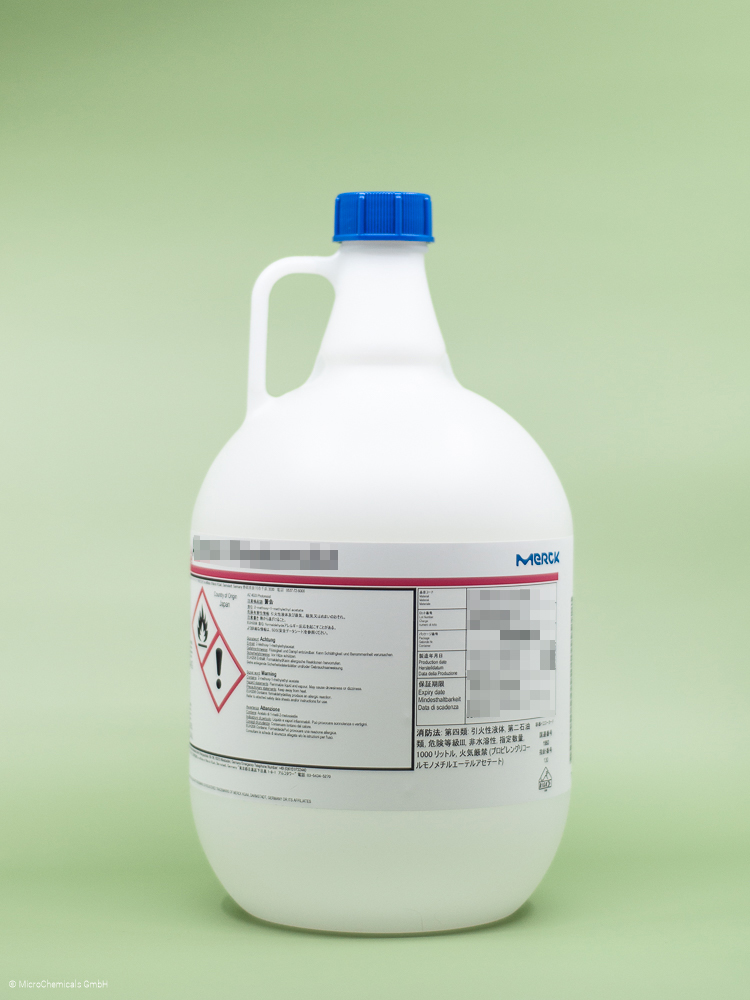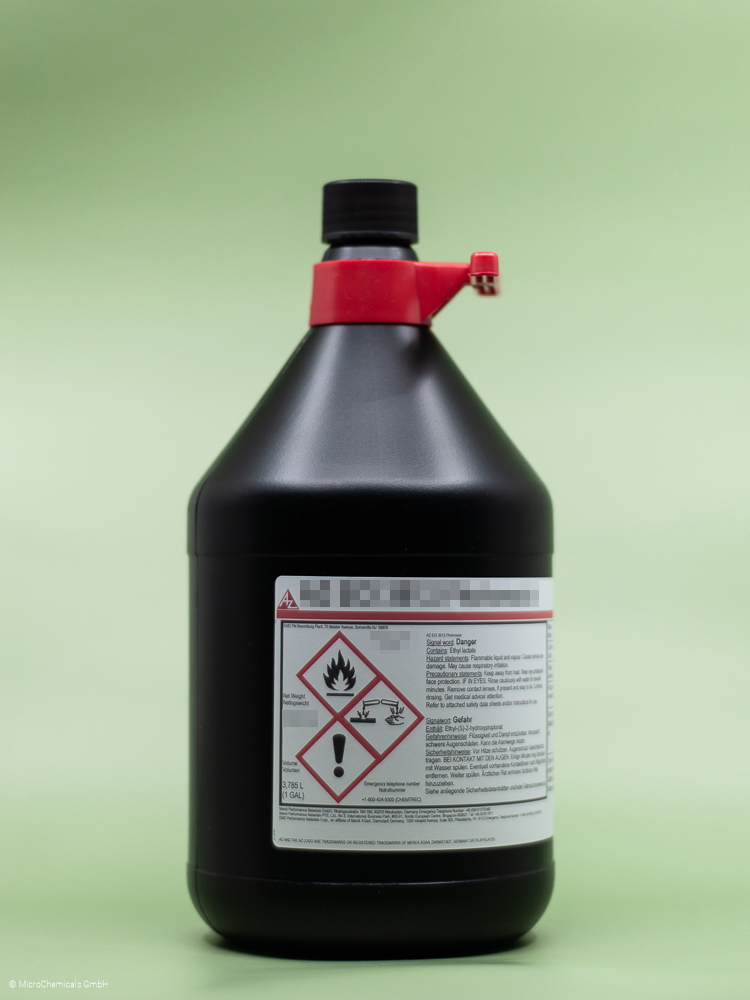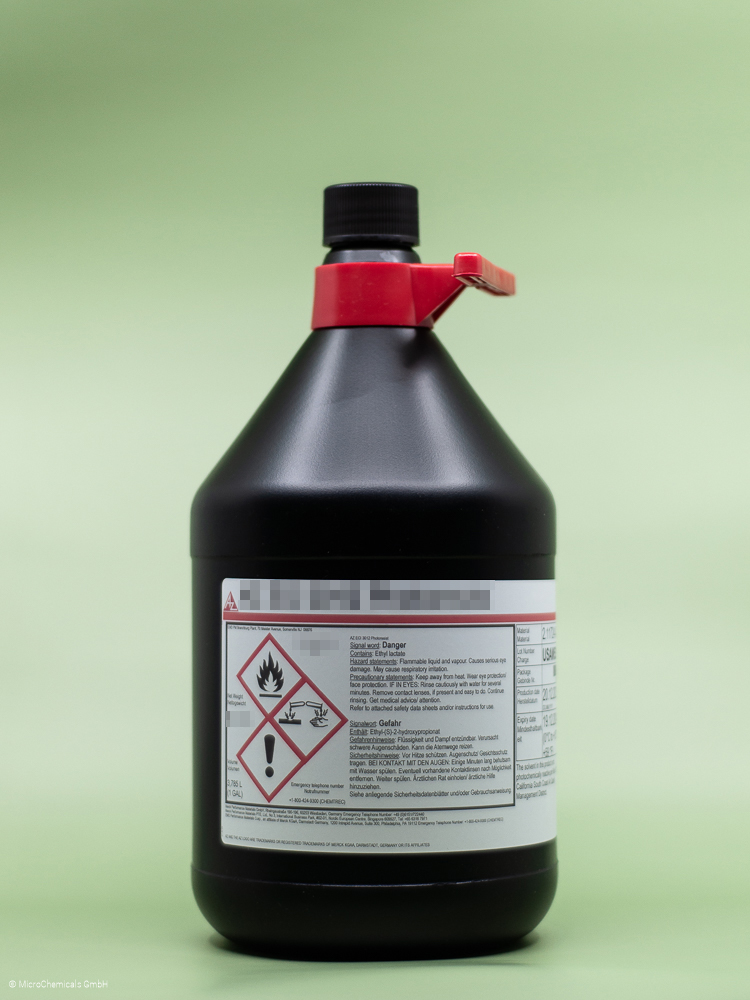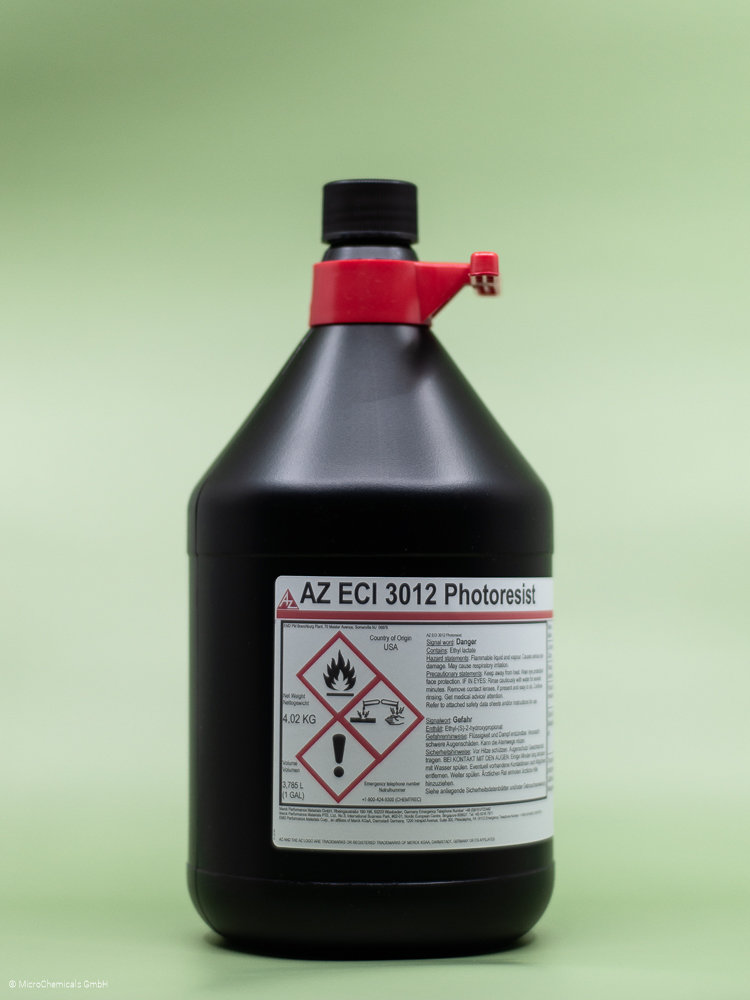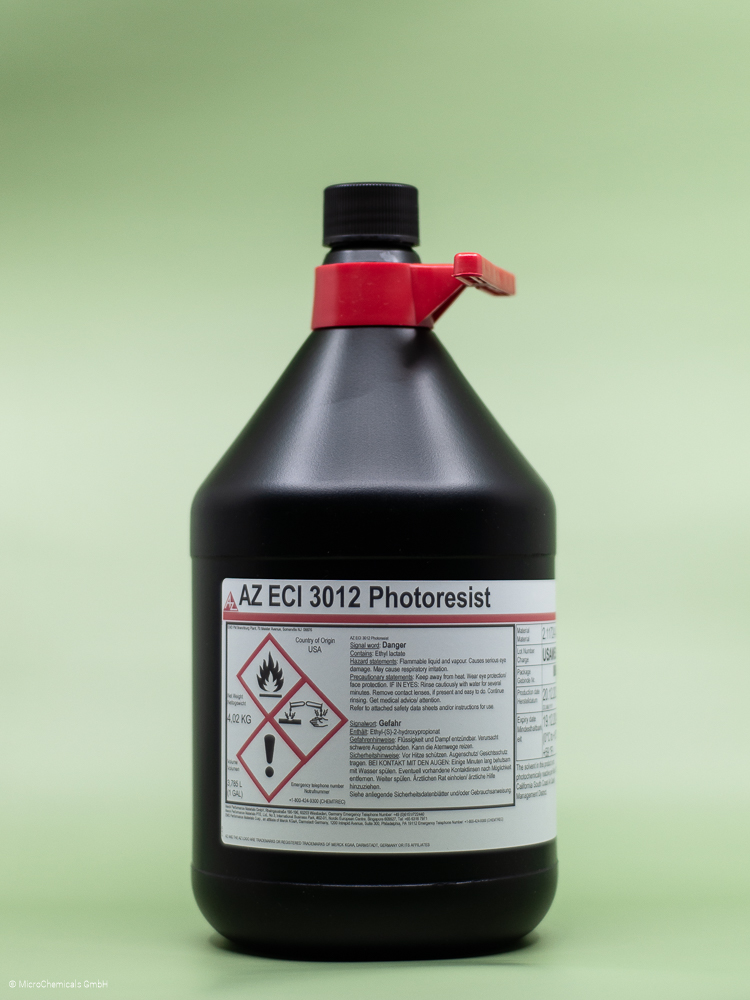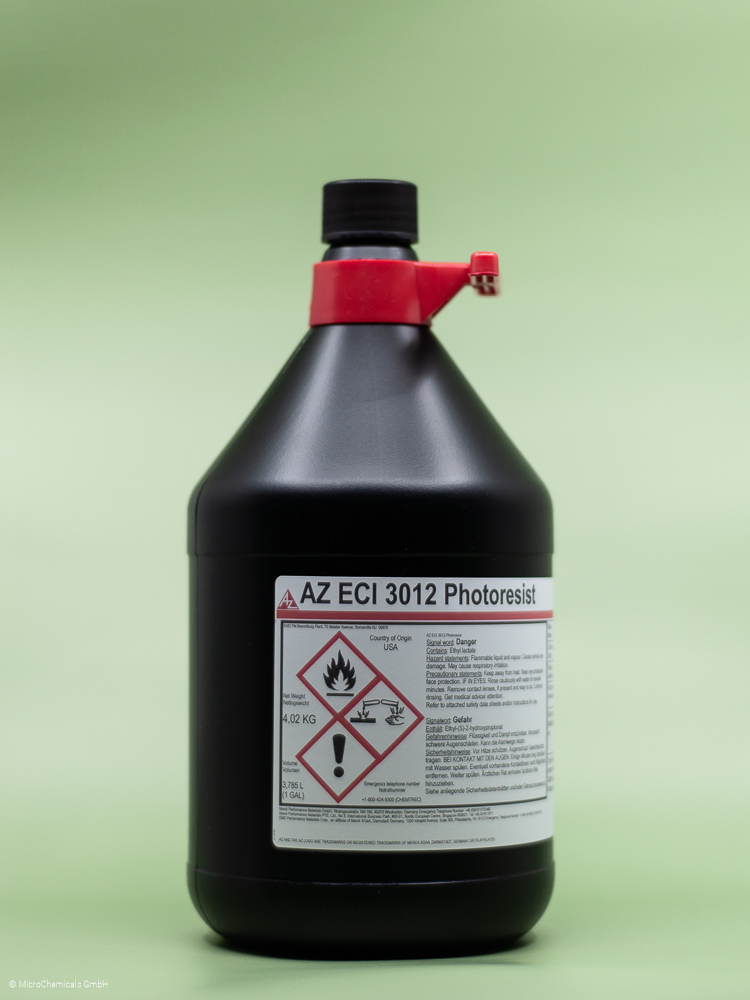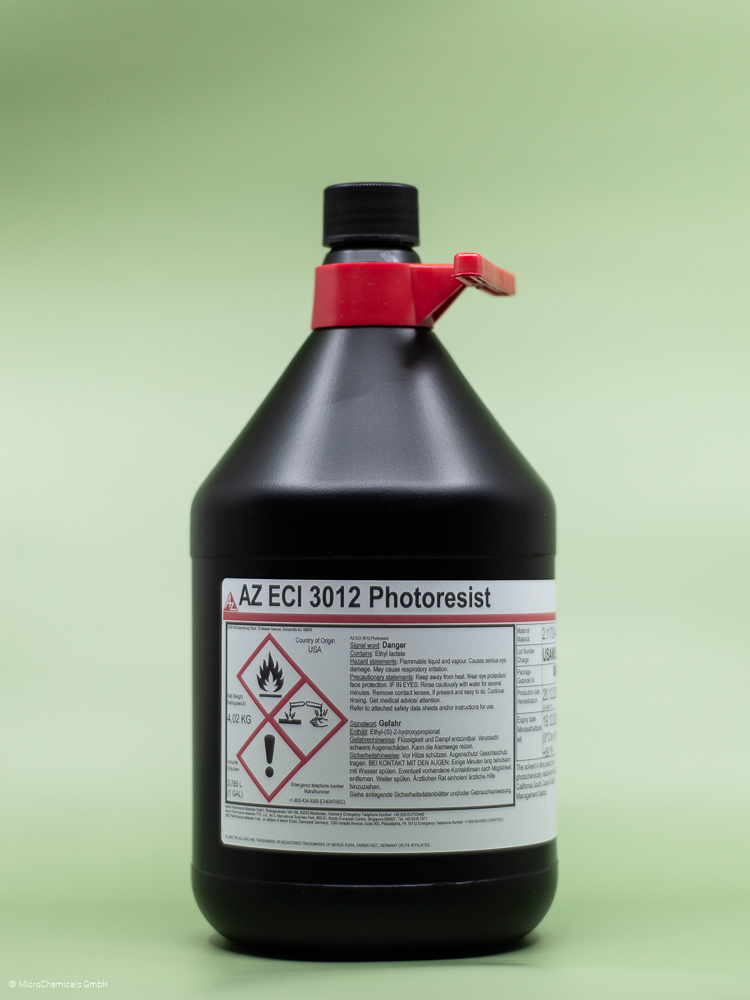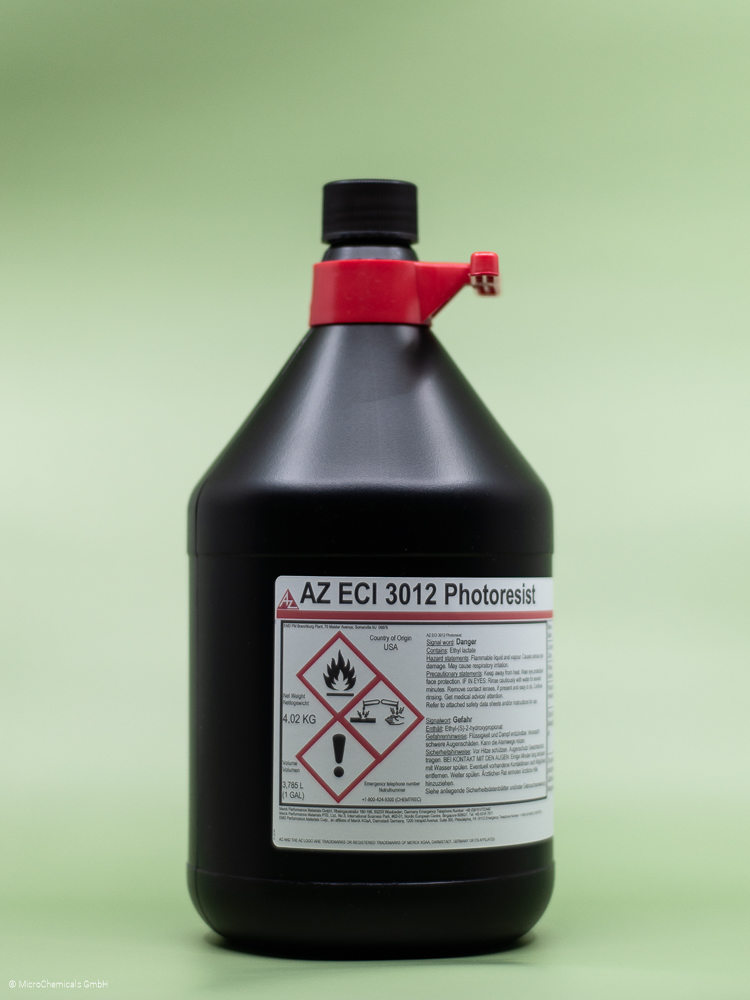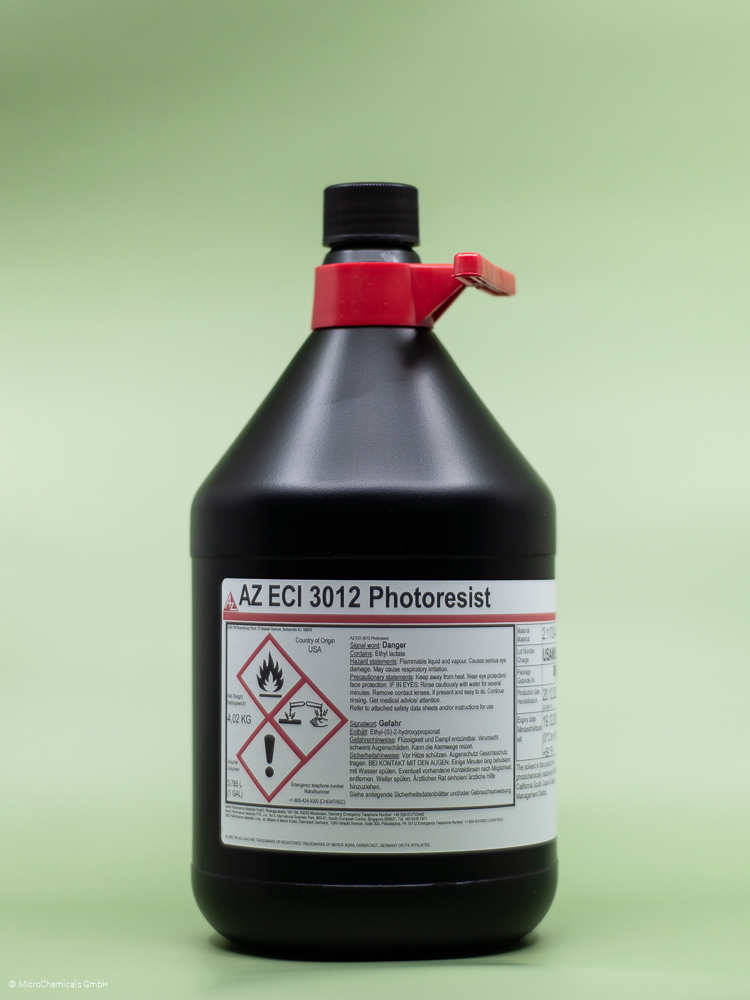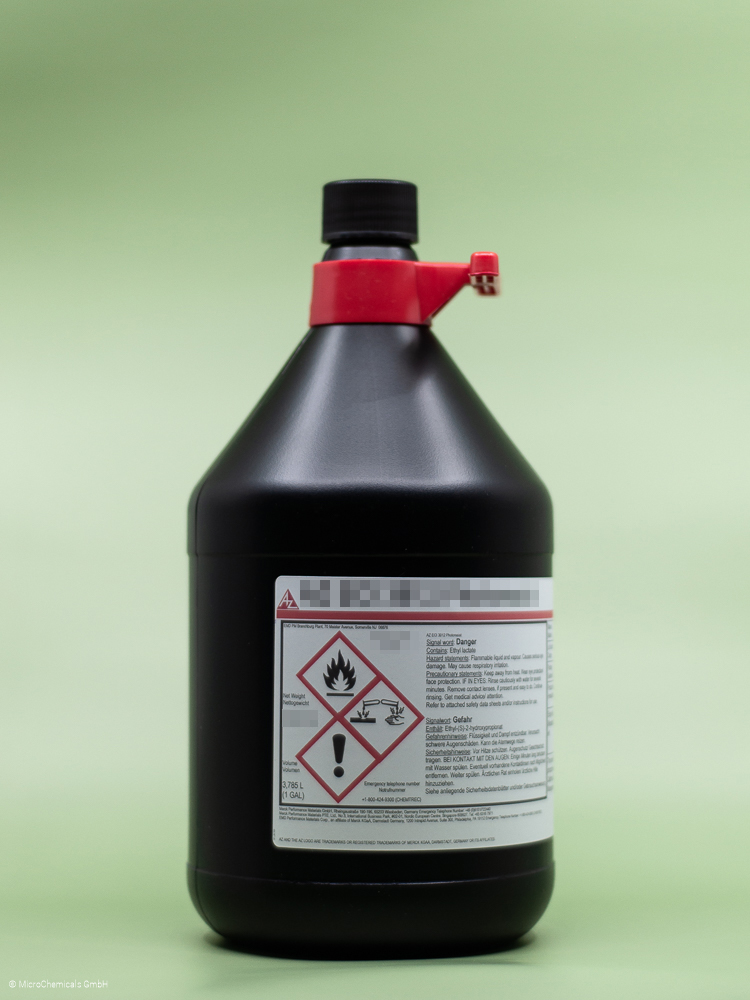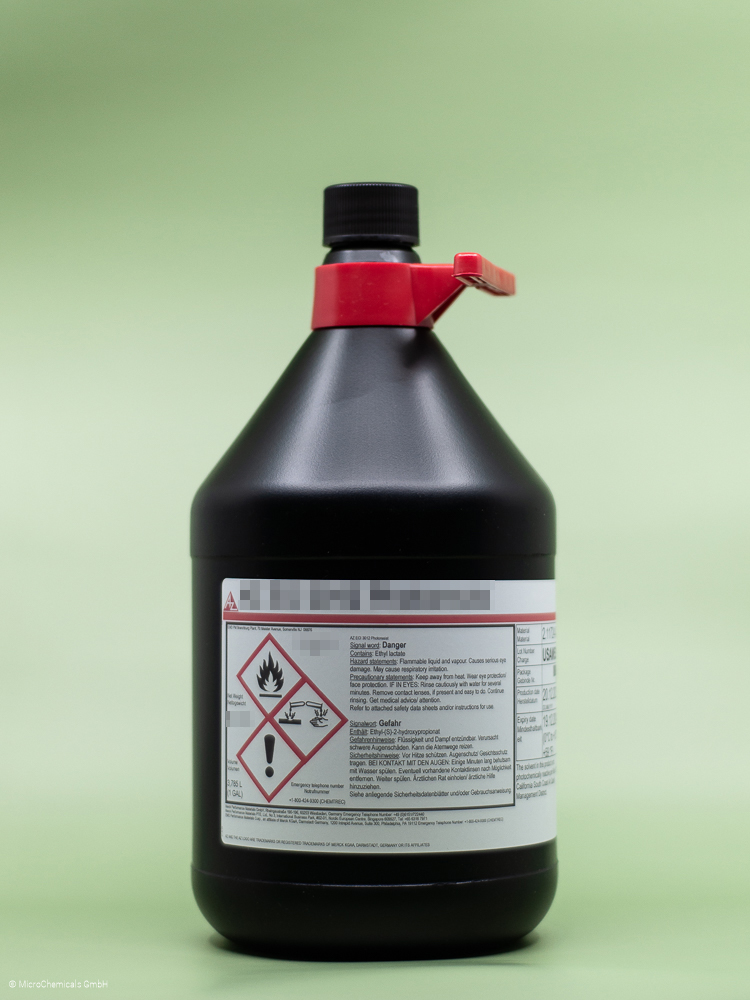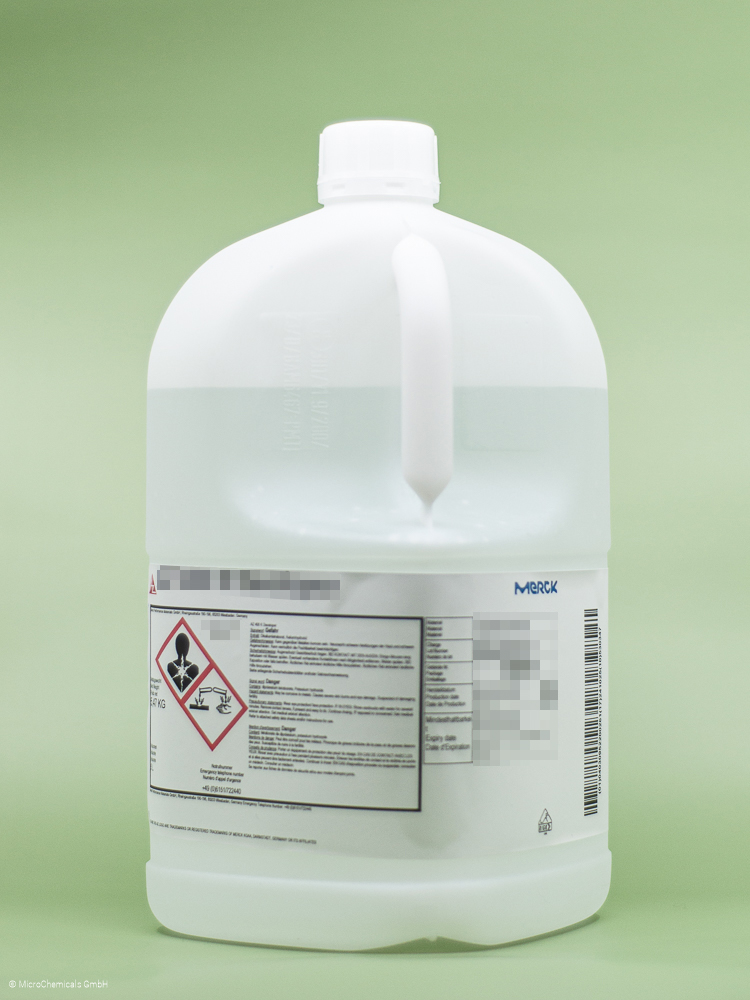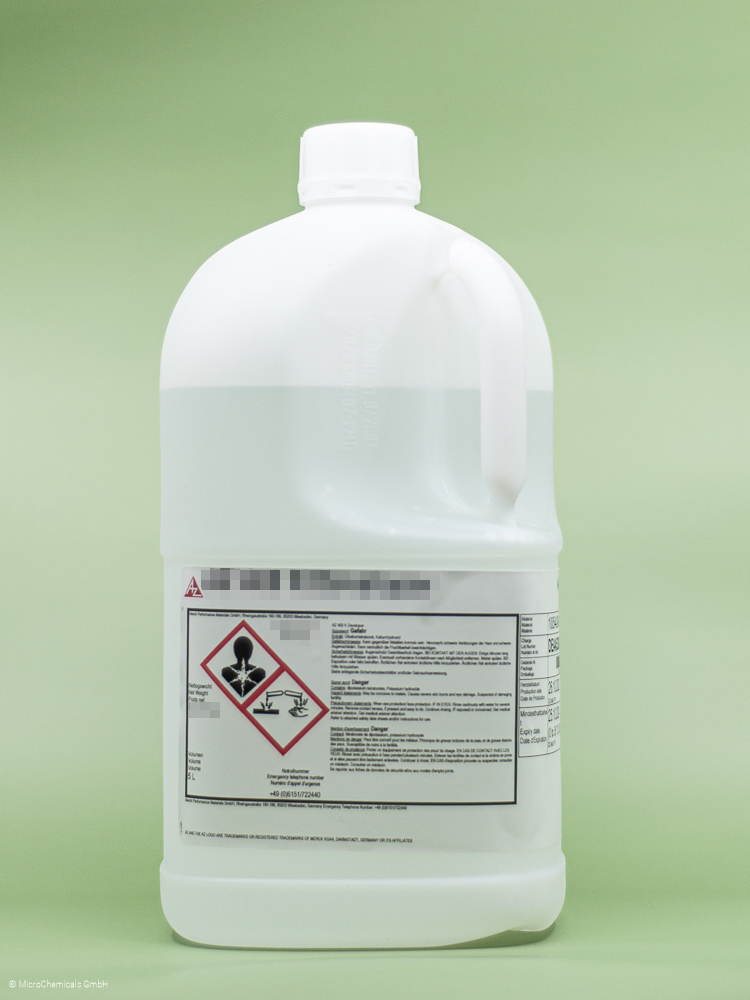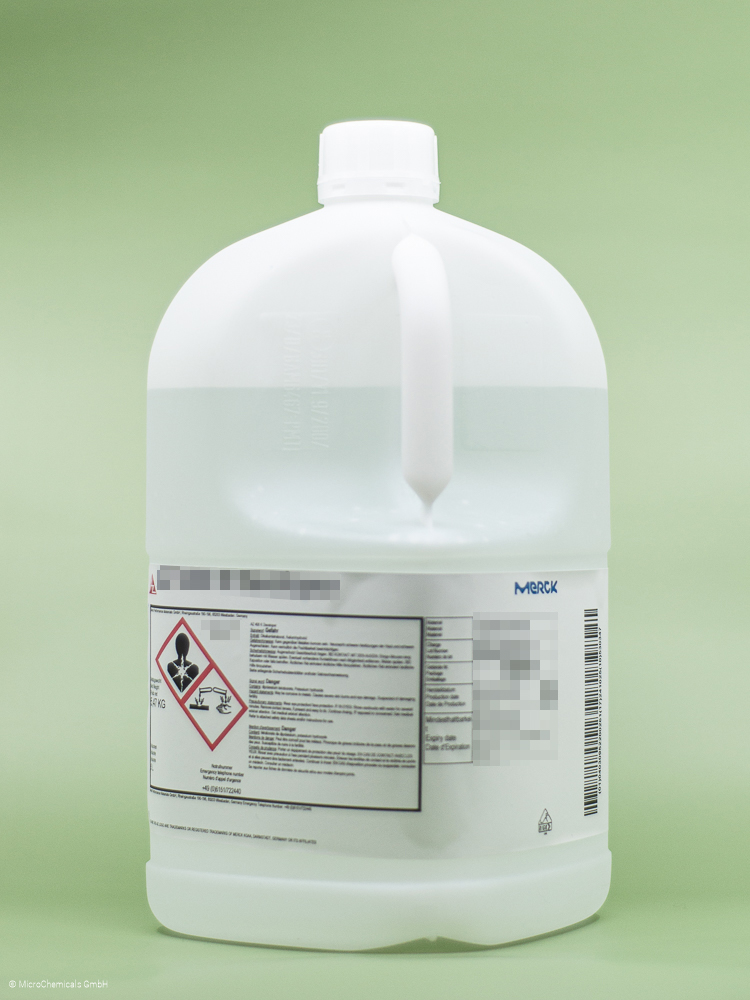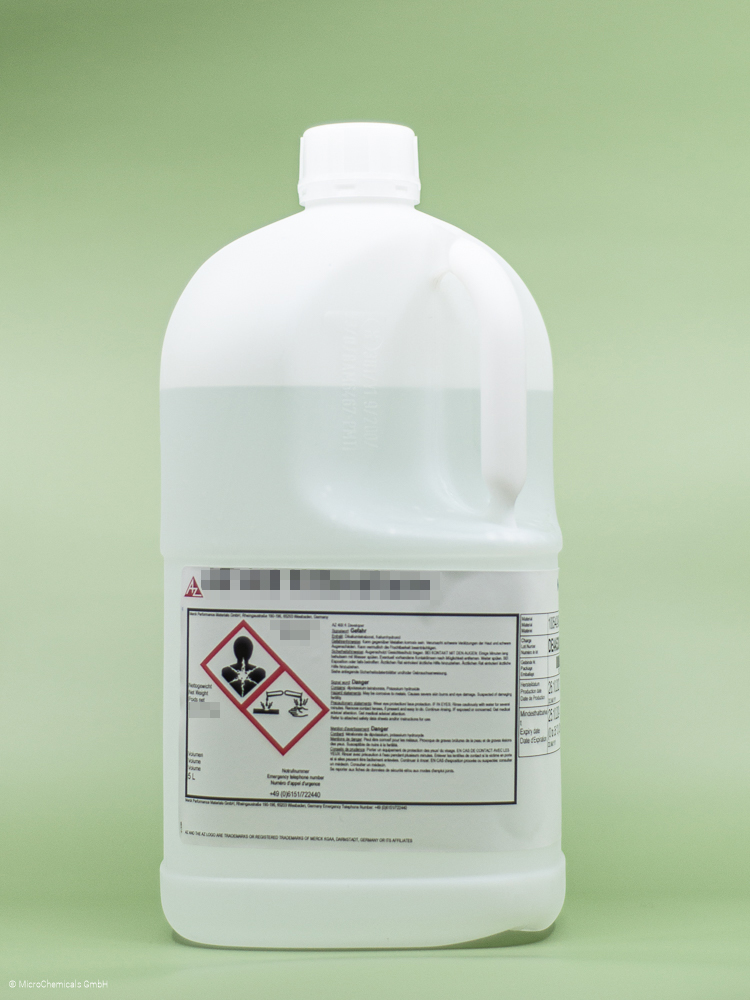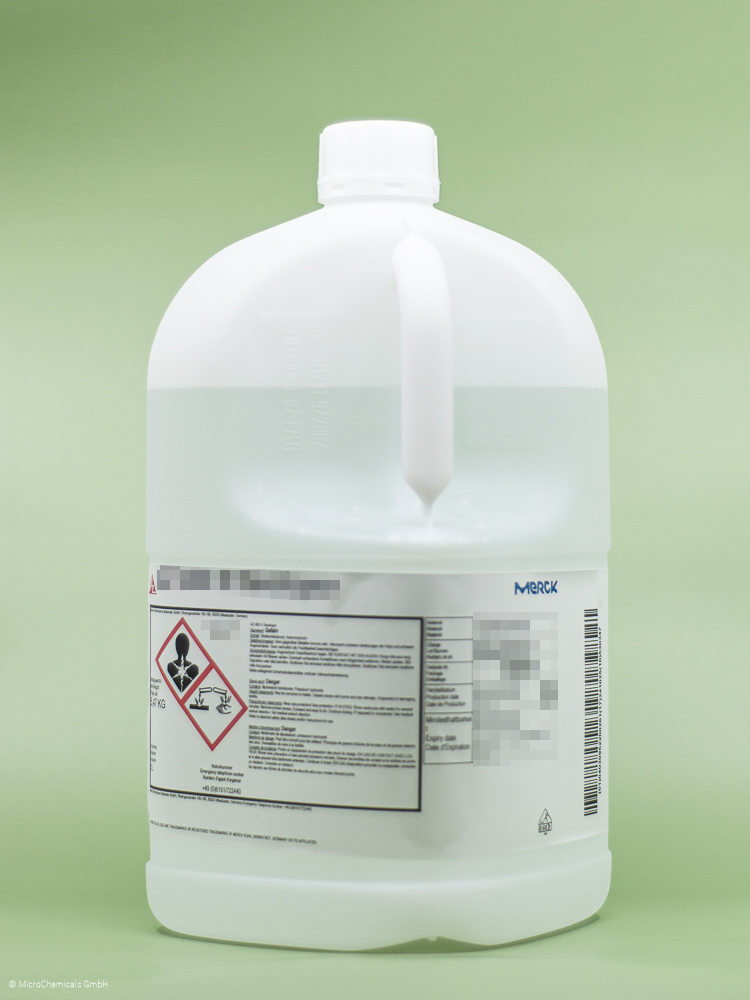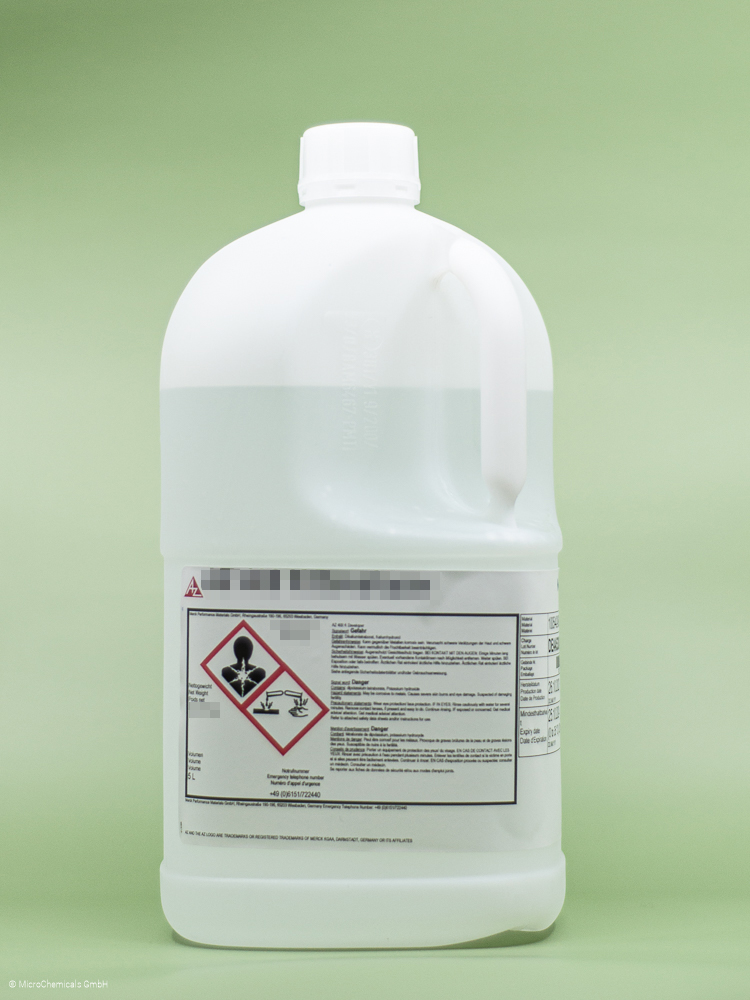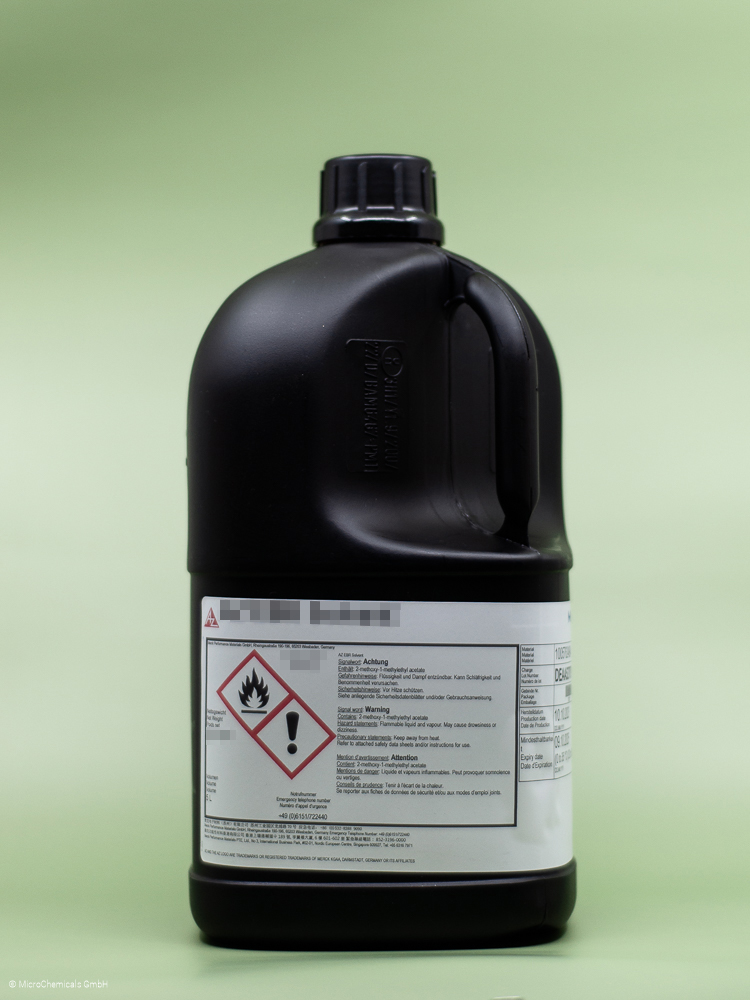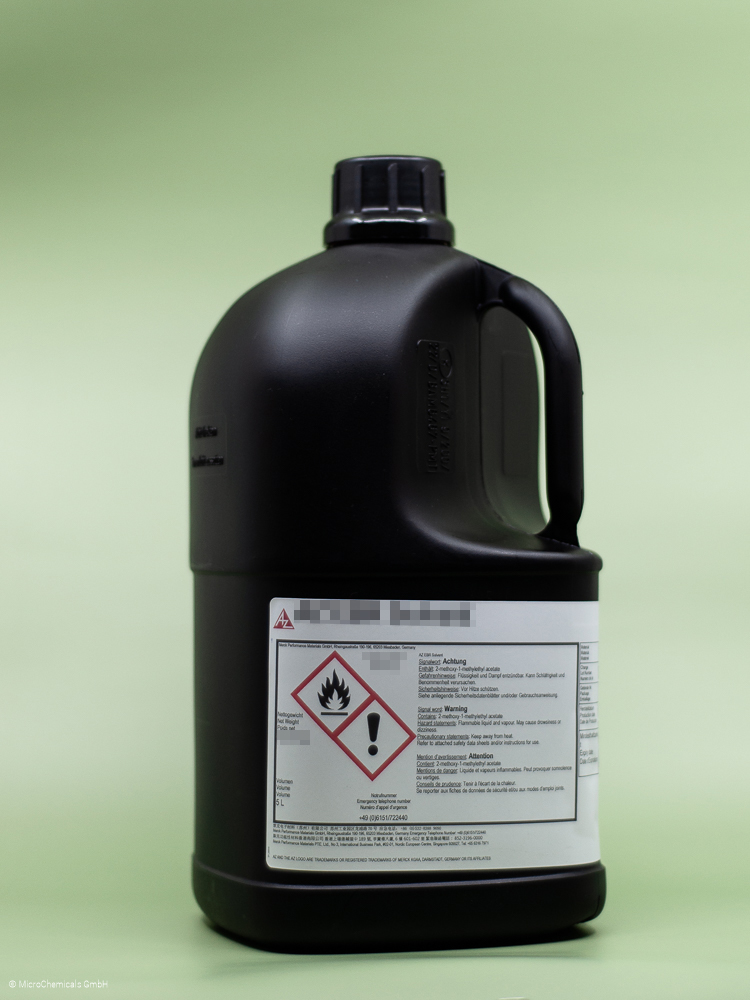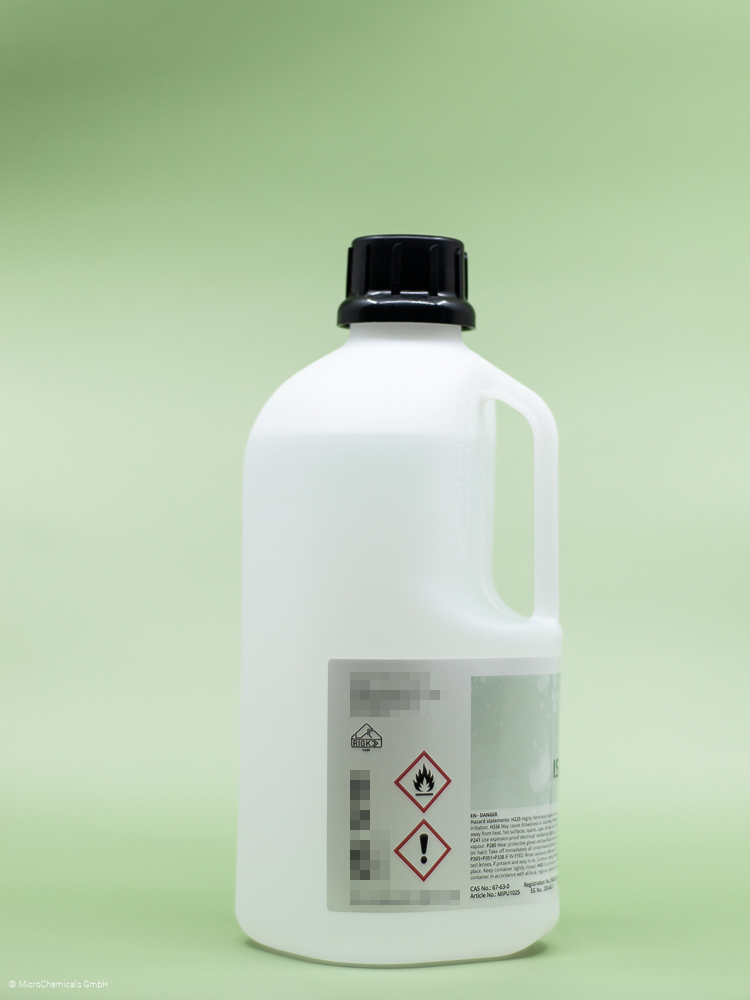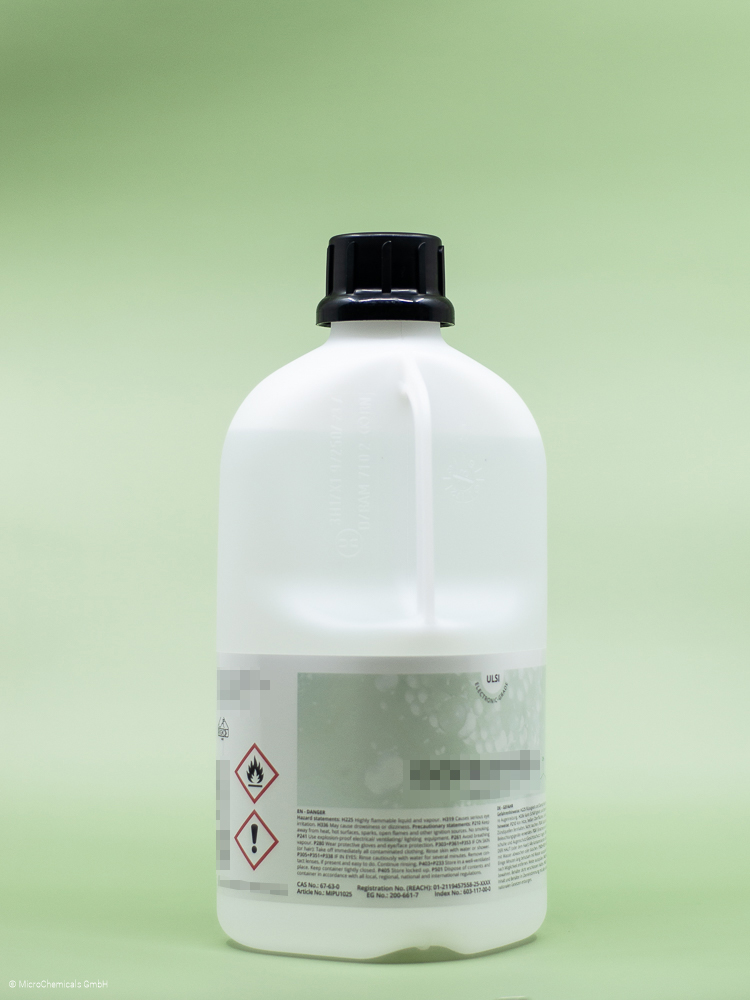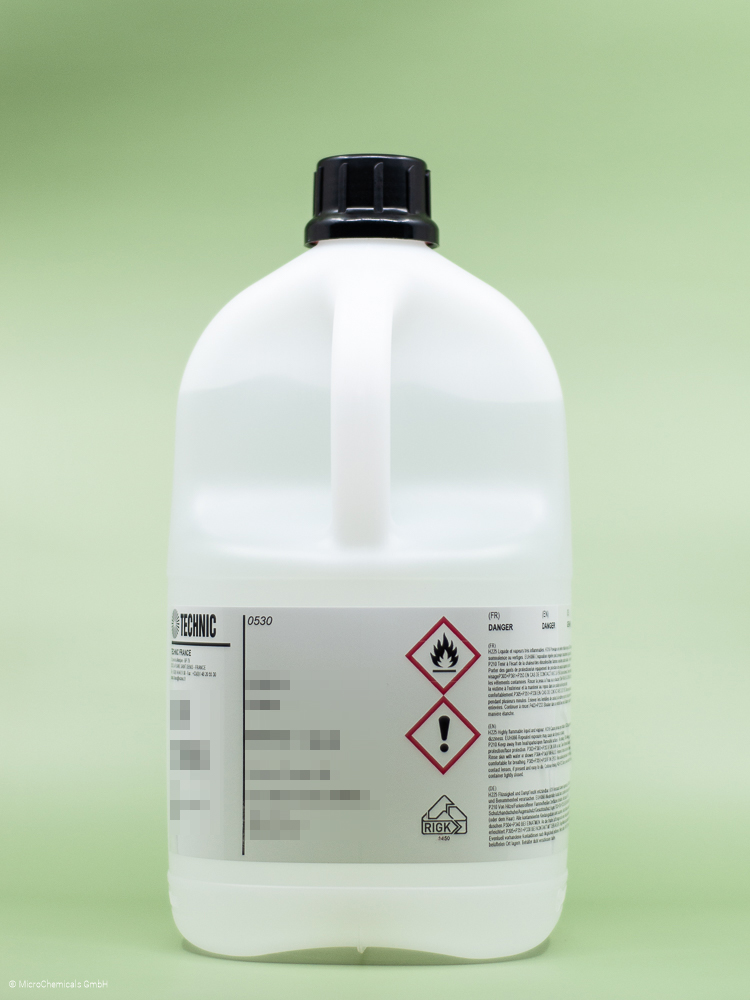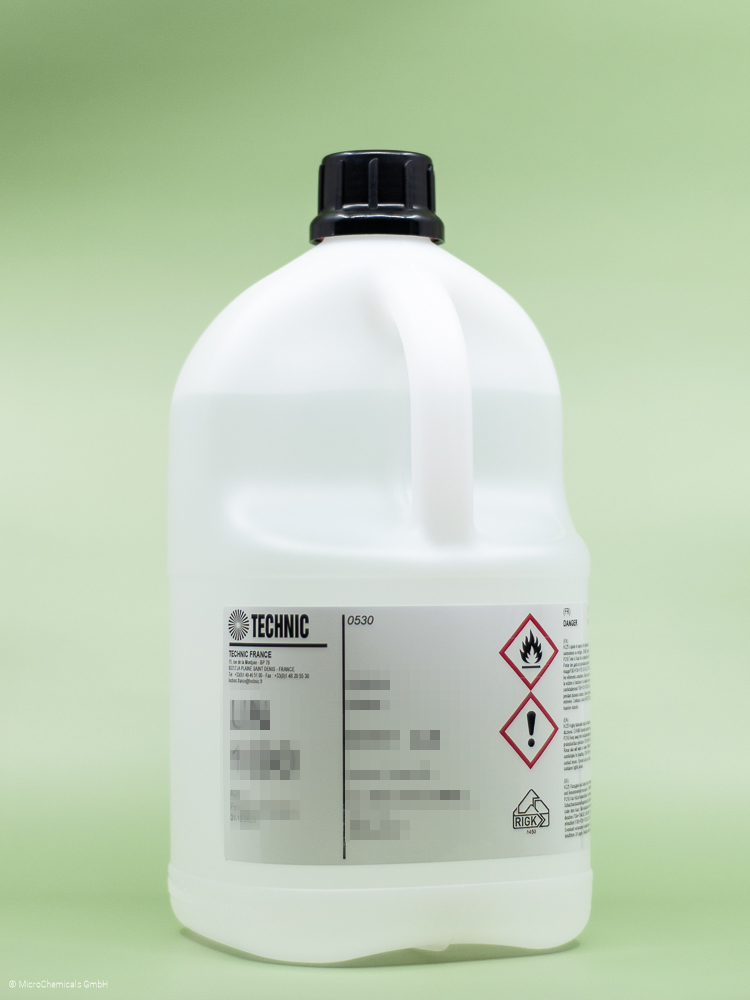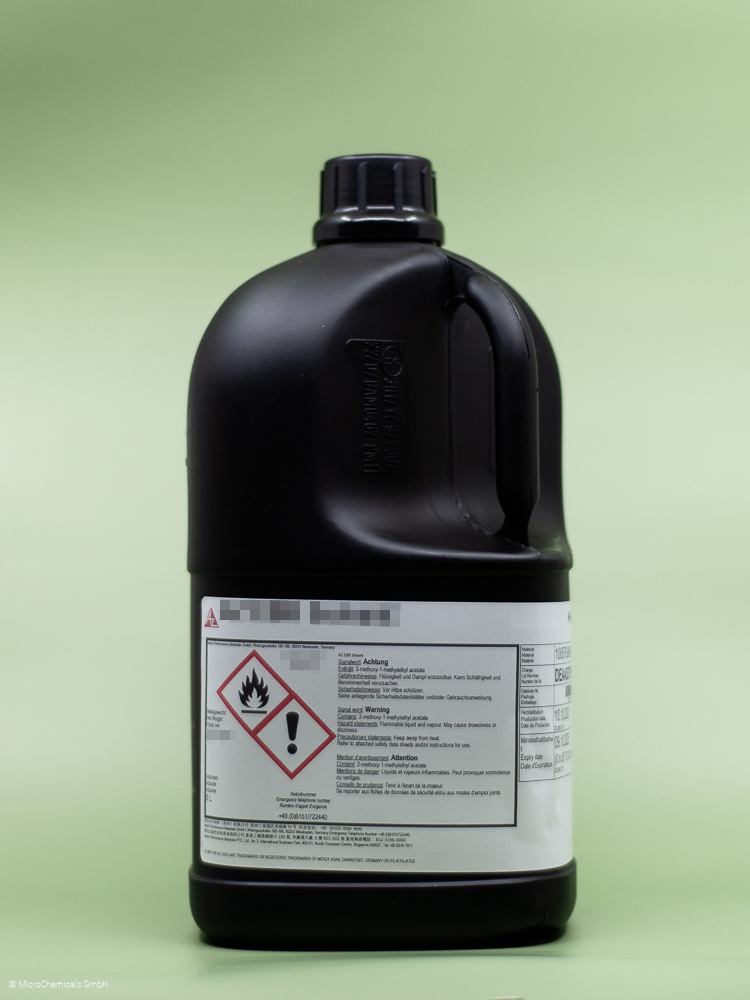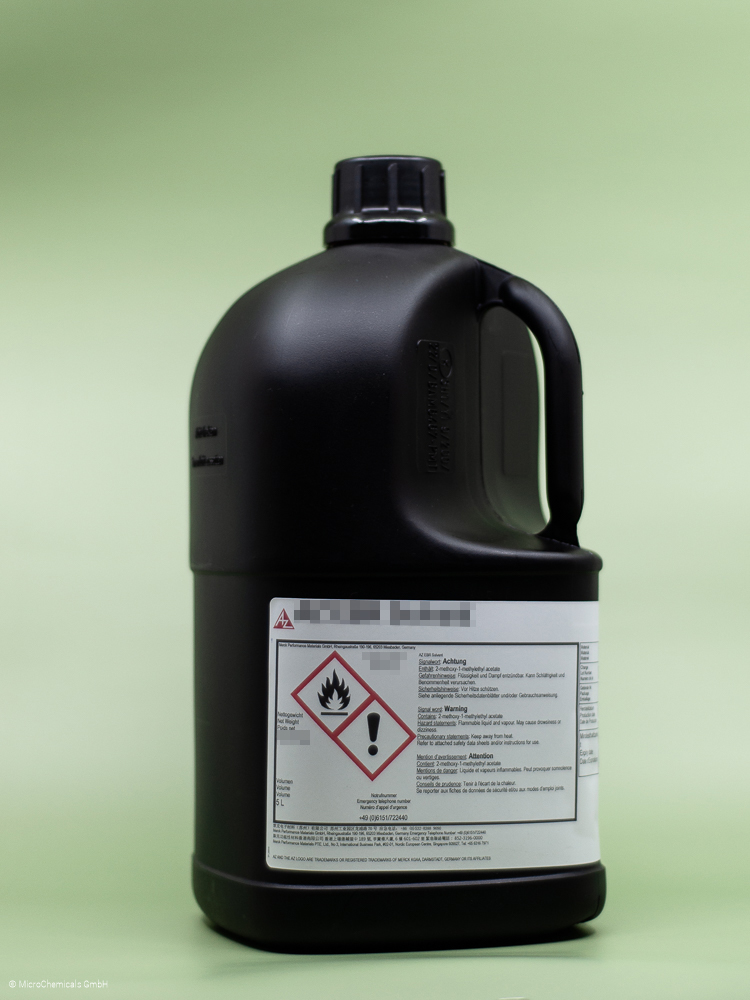AZ 4533 Photoresist - 3.785 l
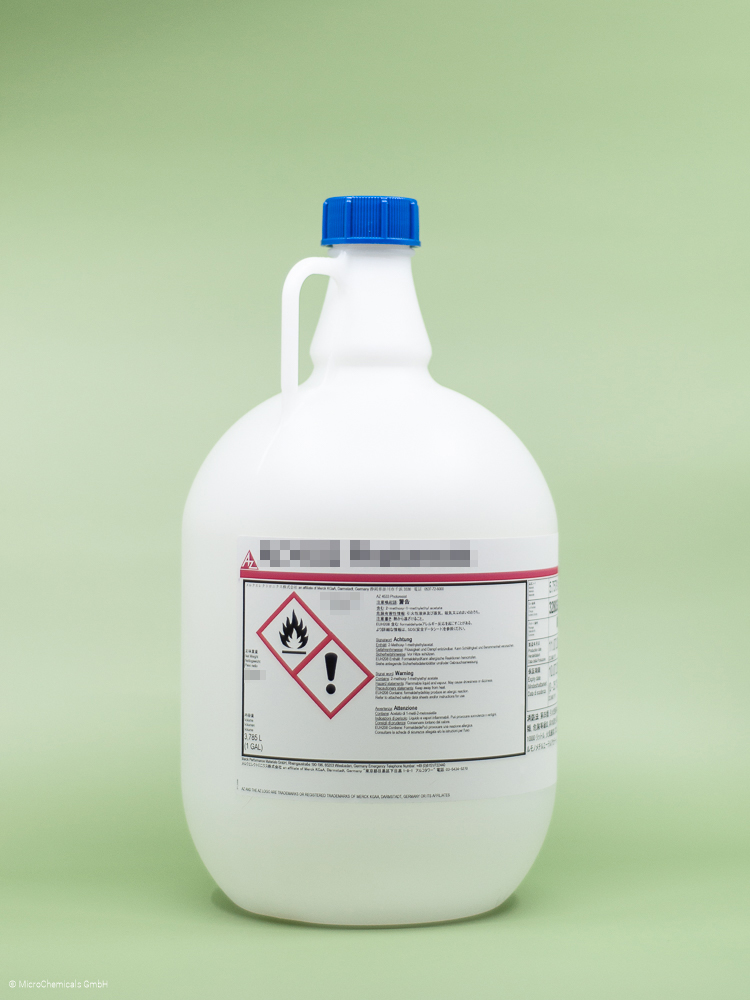
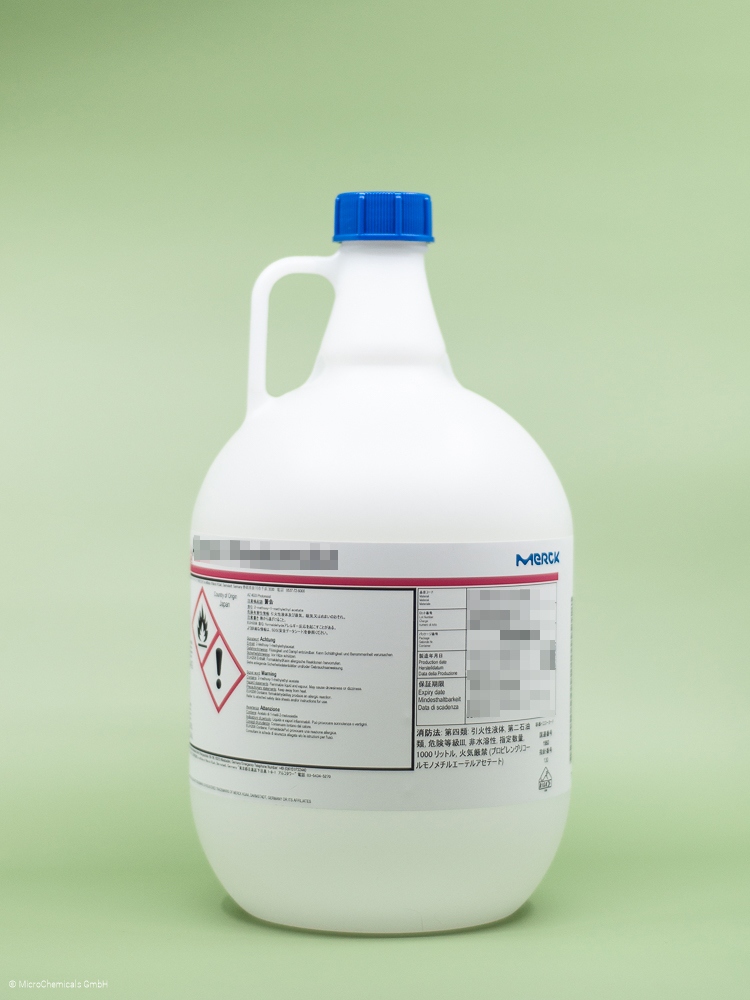






Product information "AZ 4533 Photoresist - 3.785 l"
AZ® 4533
Thick Resists with Optimized Adhesion
General Information
AZ® 4533 belongs to the AZ® 4500 series of positive resists (g-, h- and i-line sensitive) in the medium resist film thickness range, the main application of which is as a resist mask for wet etching or electroplating.
Product Properties
AZ® 4500 resist family is not optimized for very steep resist sidewalls nor for high stability against thermal softening (softening temperature approx. 100 °C), but rather for very high adhesion to all common substrate materials. The low photoinitiator concentration of the AZ® 4500 series resists compared to thin resists (such as the AZ® 1500 series) allows the exposure of even thicker resist layers without the risk of nitrogen bubbles forming in the resist layer. AZ® 4533 is often used for etching metallic or non-metallic layers. AZ® 4533 achieves a resist film thickness of approx. 3.3 µm at a spin speed of 4000 rpm. With a correspondingly adjusted spin profile, the resist film thickness range of approx. 2.5 - 5 µm can be covered. If thinner resist layers are desired, the use of the AZ® 1500 series is recommended, or a dilution of the AZ® 4533 with PGMEA = "AZ® EBR Solvent". Thicker resist layers can be achieved with the AZ® 4562, which differs from the AZ® 4533 only in the lower solvent content.
Developers
For development, we recommend either TMAH-based developers such as the ready-to-use AZ® 326 MIF or 726 MIF, or the KOH-based AZ® 400K (typically 1:4 diluted with water, for faster development also slightly stronger with 1:3.5 or 1:3). On alkaline-sensitive substrate materials such as aluminum, we recommend the aluminum-compatible, undiluted "AZ® Developer”.
Removers
If the resist structures have not been thermally cross-linked by plasma processes, ion implantation or high temperatures (> approx. 140 °C), all common removers such as AZ® 100 Remover, DMSO or many other organic solvents (e.g. acetone rinsed with isopropanol) are suitable for removing the resist layer. For cross-linked resist structures, high-performance strippers such as the NMP-free TechniStrip P1316or AZ® 920 Remover are recommended, and in the case of alkaline-sensitive substrate materials (such as aluminum), the TechniStrip MLO 07.
Thinning/ Edge Bead Removal
If the resist is to be diluted for spin coating, PGMEA = AZ® EBR Solvent is the recommended solvent. PGMEA is the solvent for AZ® 4533 anyway and is also recommended for edge wall removal if necessary.
Further Information
Our safety data sheets and some of our technical data sheets are password-protected.
You will receive the access data after completing the form.
The access data for the data sheets are not your login data from our shop!
MSDS:
Safety Data Sheet AZ® 4533 Photoresist english
Safety Data Sheet AZ® 4533 Photoresist german
TDS:
Technical Data Sheet AZ® 4533 Photoresist english
Application Notes:
Further Information about Photoresist Processing
Related products
Developer
Remover
